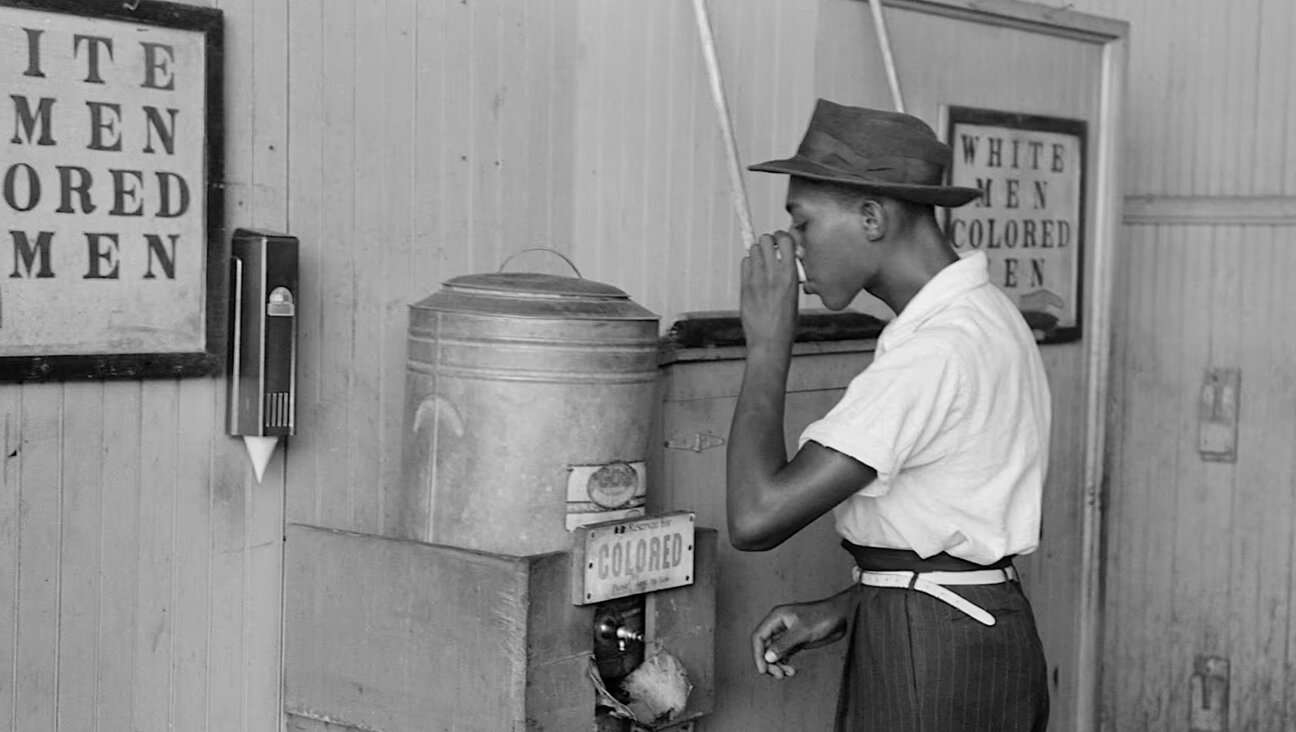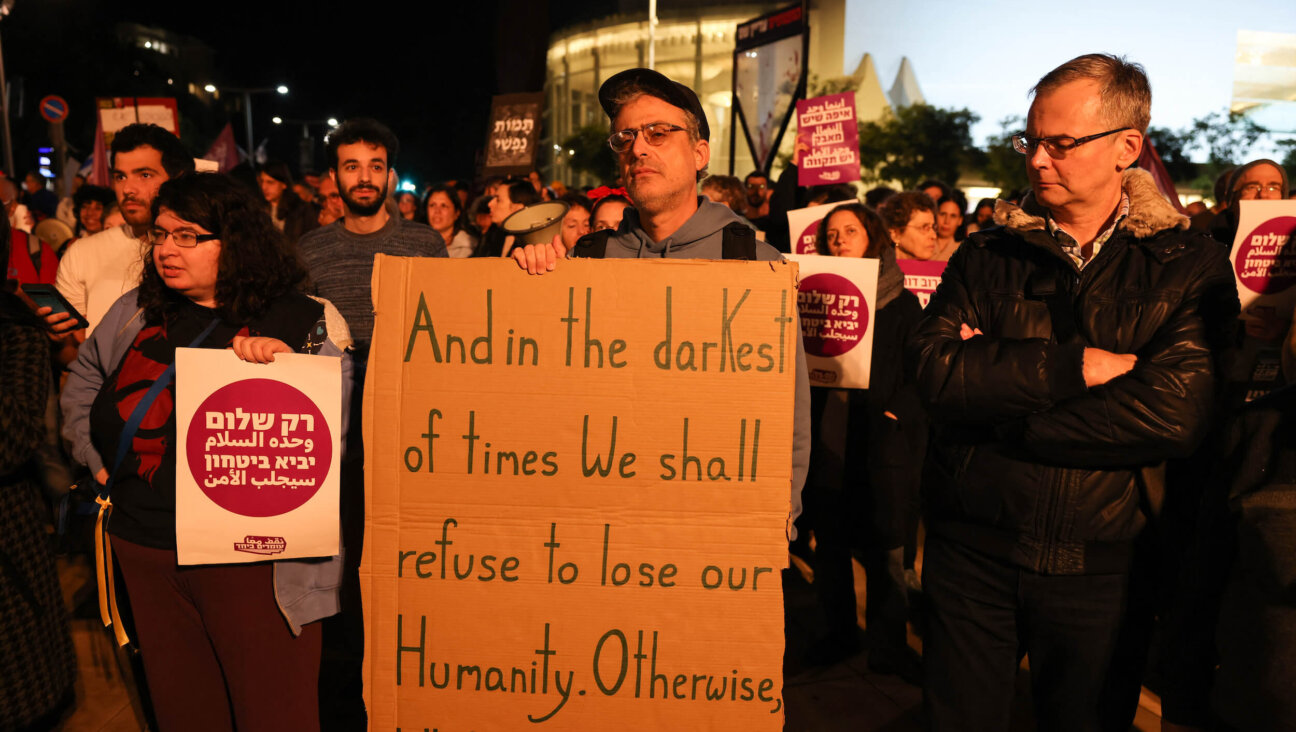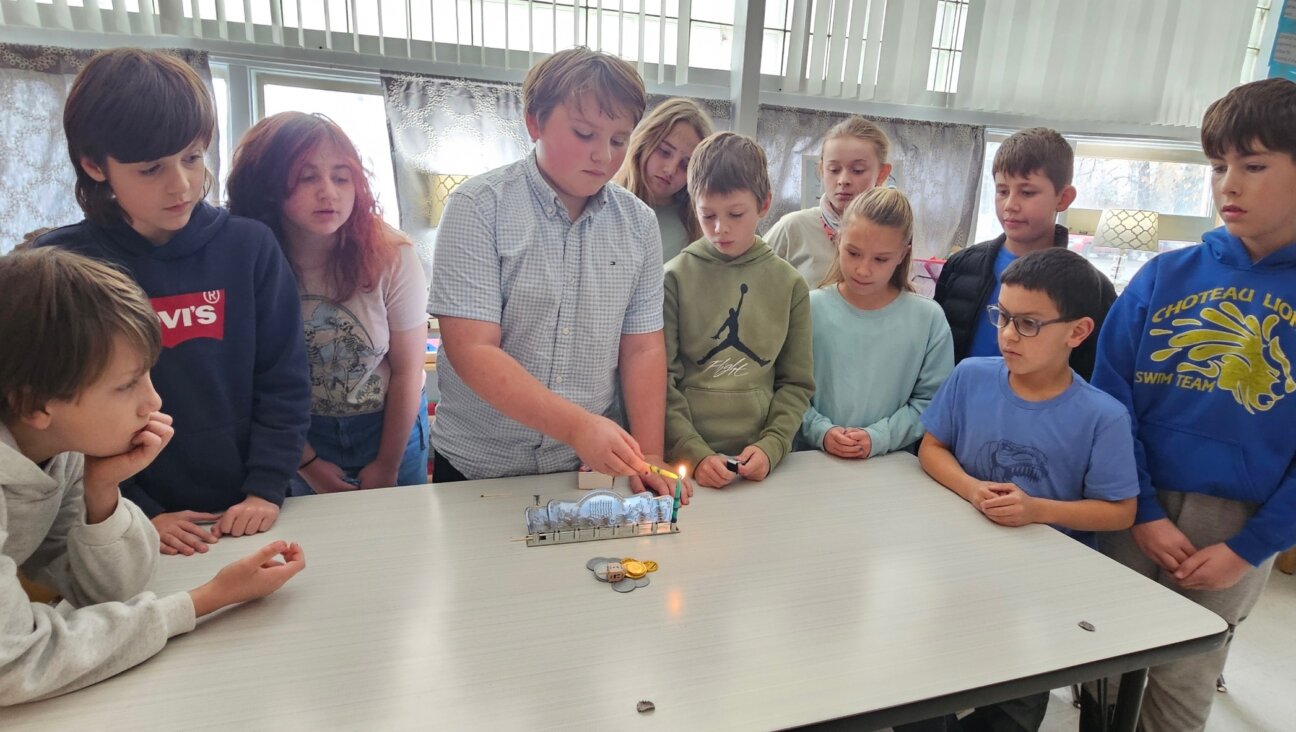From Buenos Aires to Warsaw, ‘The Bride’ comes home
The painting by Maurycy Minkowski (circa 1920) was almost lost during the 1994 bombing of the AMIA in Buenos Aires
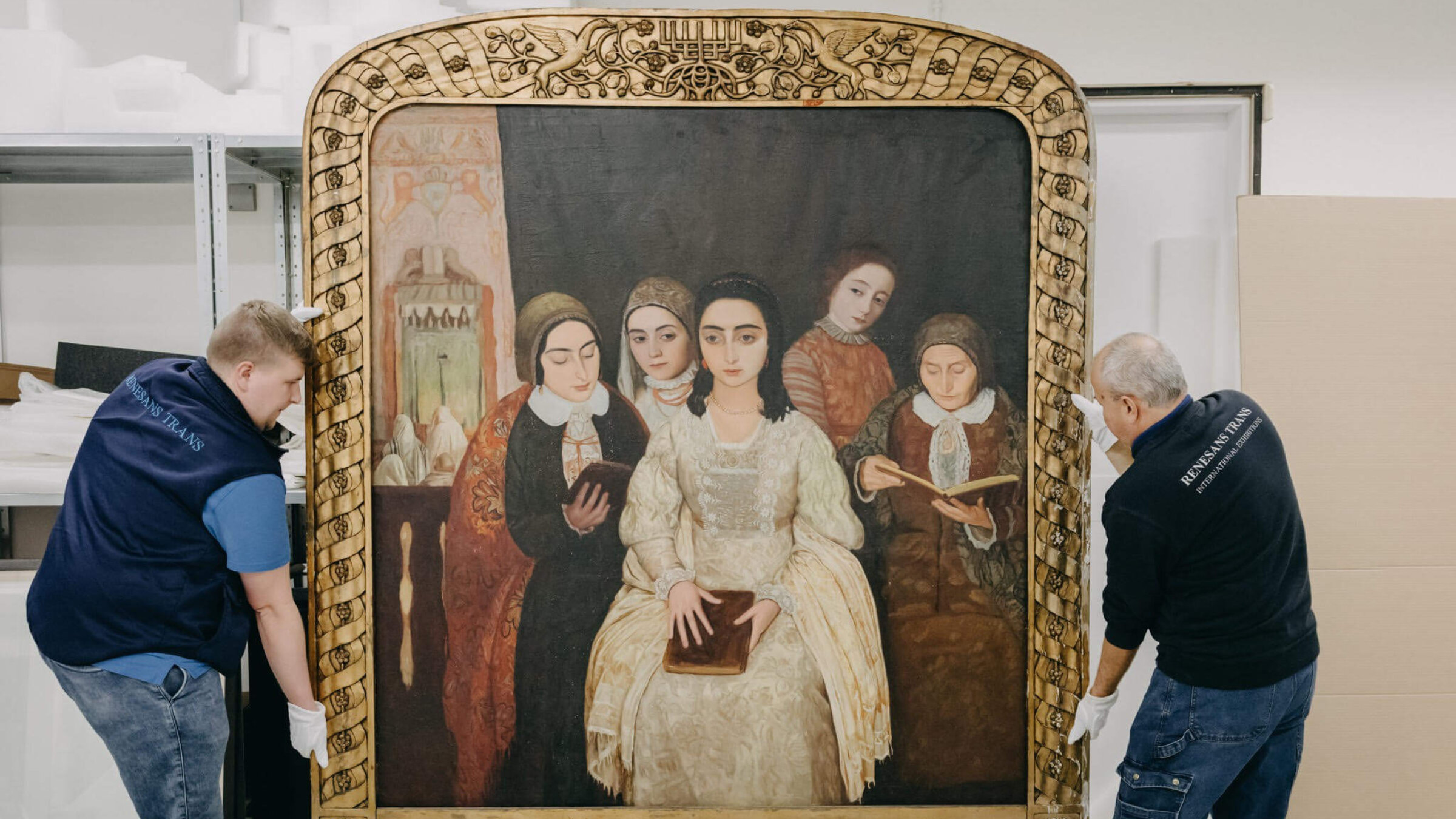
The painting arrives at the POLIN Museum, in Warsaw, on November 7 Photo by Maciek Jaźwiecki / POLIN Museum of the History of Polish Jews
For almost 100 years, “The Bride,” a magnificent painting by Polish Jewish artist Maurycy Minkowski (1881–1930), has been in exile.
In 1930, Minkowski traveled to Buenos Aires for an exhibition of more than 200 of his works. And then tragedy struck. As a child, he had lost his hearing due to an accident. While walking on the street shortly before the exhibit’s opening, he was struck by an oncoming vehicle whose approach he couldn’t hear. The paintings, which were exhibited posthumously, stayed in Argentina and were dispersed.
Since then, Fundación IWO — the Buenos Aires branch of the YIVO Institute for Jewish Research in Vilna — managed to acquire more than 80 of Minkowski’s paintings, some at auction and many through a coordinated effort during the 1940s to rescue 60 works that had been pawned or were on consignment with dealers trying to sell them.
IWO’s Minkowski collection, the largest in the world, was almost lost during the 1994 bombing of the AMIA building (the Buenos Aires Jewish community center), where IWO’s holdings were kept. A volunteer rescue team led by IWO’s academic director Ester Szwarc saved the paintings from the rubble. “The Bride” was among them.
POLIN Museum of the History of Polish Jews in Warsaw had long expressed strong interest in including this painting in its core exhibition. Already in 2007, Renata Piątkowska, Chief Curator of Collections, had proposed “The Bride” for the museum’s exhibit on the Jewish wedding and its transformations in the 19th century.
On Nov. 7, 2025, almost 20 years later, that dream came true. The painting arrived at POLIN Museum to great fanfare, as a landmark gift from IWO made possible by philanthropist and POLIN Museum Council member, Ronald S. Lauder.
Maurycy Minkowski was born into a well-to-do Warsaw family. He attended a school for the deaf, which encouraged his artistic talent. Minkowski graduated from the Kraków Academy of Fine Arts with a gold medal in 1905 and returned to Warsaw. He was shaken by the bloody pogroms and devastation of the Jewish community that he witnessed there and elsewhere that year. This experience prompted him to shift his focus from landscapes and portraits to the trauma of Jews fleeing violence. Those powerful paintings capture the desperation of masses of Jews on the run with nowhere to go. He is best known for these works, although he was never fully appreciated in his lifetime, neither in Poland, nor in Argentina.
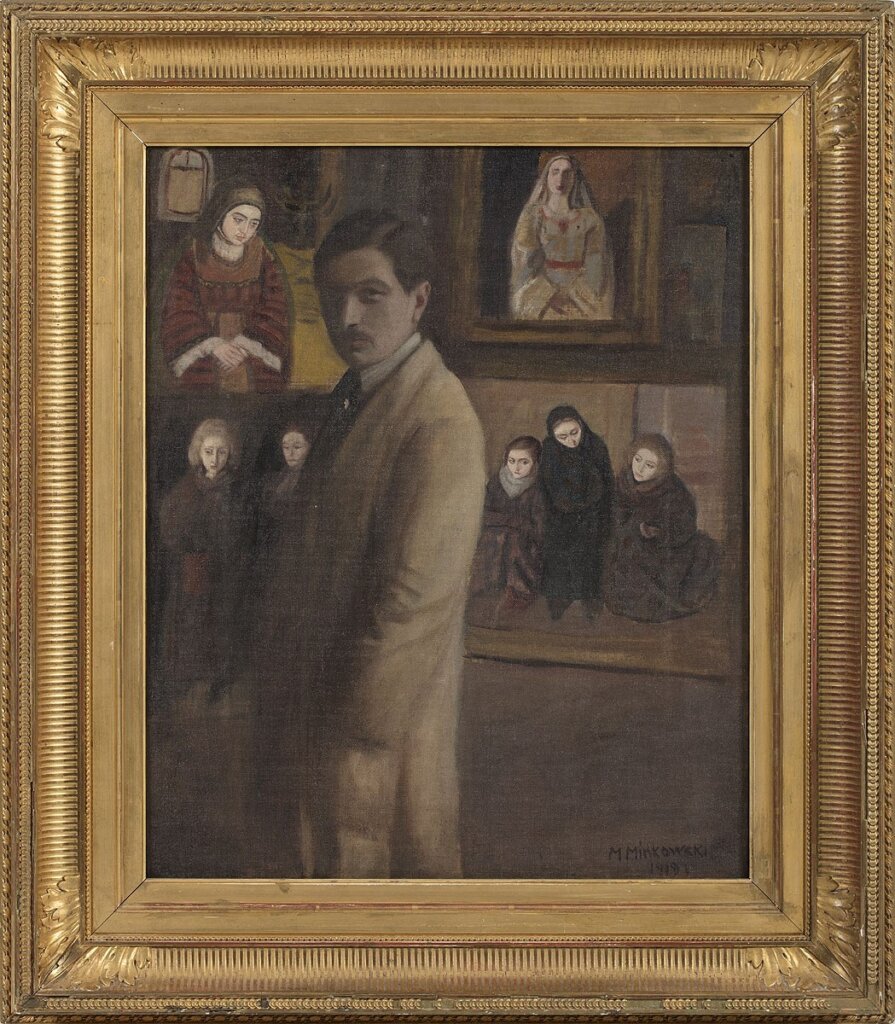
Minkowski moved to Paris in 1908 and in the years that followed turned to scenes of Jewish daily life, essentially in the shtetl. It was around 1920 that he painted “The Bride,” one of several of his works on this theme. The bride’s attire and that of the married women surrounding her recall the clothing of Jewish women more than a century earlier.
The married women are dressed in keeping with tsnies, modesty. Their short hair is covered with an elaborately embroidered bonnet, shimmering with metallic thread. There is also the hint of a shterntikhl, a bejeweled panel along the front of the head covering; a brusttukh, a decorative panel on their chest, and a helzl, a ruff, around their neck.
The bride’s hair has not yet been shorn and is not yet covered. All the women are holding a prayerbook — it was customary to give the bride a beautifully bound prayerbook as a wedding gift. Set in an exquisite wooden frame hand carved by Minkowski himself, the painting captures the solemnity of this moment, as the bride contemplates her future after the wedding. The lives of Jewish women — not only their dress and weddings — would be transformed beyond recognition in the decades that followed.
“This remarkable painting is a true testament to Maurycy Minkowski’s artistic talent and his deep connection to Jewish culture,” said Zygmunt Stępiński, Director of POLIN Museum, when the painting arrived. The work will be the centerpiece of a reimagined presentation in 2027 on the evolution of the Jewish wedding during the nineteenth century.




